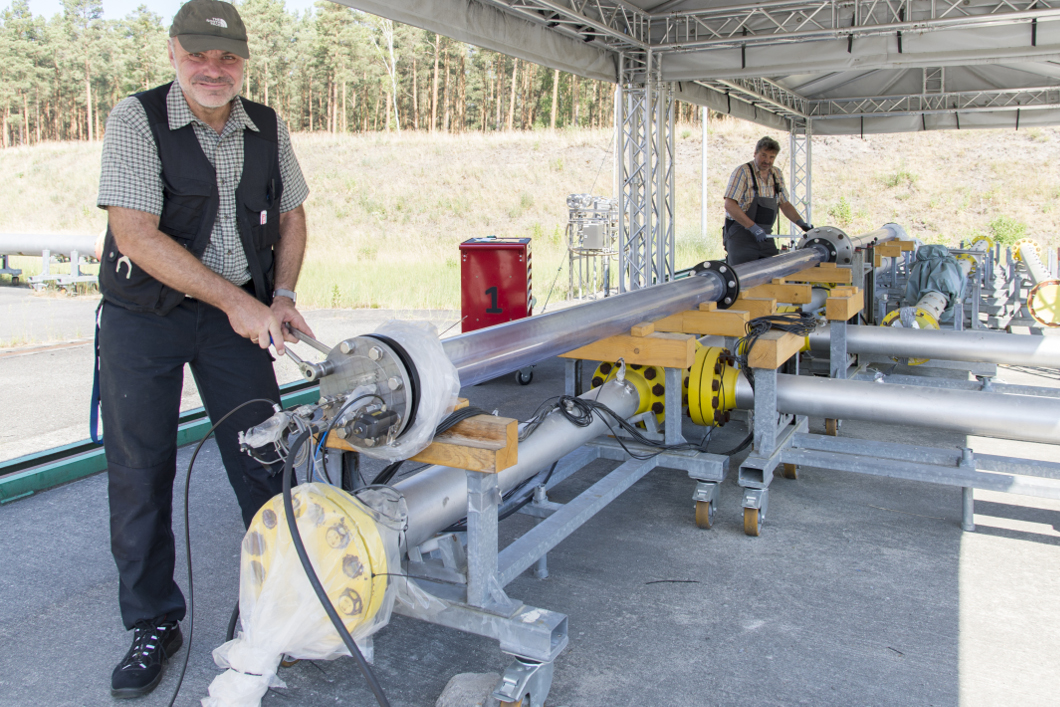
Dr. Dirk Schmidt (left) and Stefan Seifert at the inspection route for flame arrestors in gas pipelines.
Source: BAM
BAM is working on improving explosion protection in gas pipelines at its Test Site for Technical Safety (TTS) in Horstwalde. For this purpose, various over ground pipe tracks have been built at the TTS in order to carry out explosion protection tests. The aim of the tests is to prevent the explosion and thus the flames from spreading should an explosion occur in the pipe. BAM is providing a contribution to secure energy supplies through its work - also with renewable energies such as biogas.
How does explosion and flame protection work in gas pipelines?
In plants where flammable gases are transported through pipelines, including organic and landfill gases, along with vapour from flammable liquids (for example fuel vapours), an ignition of these mixtures cannot be completely ruled out. Flame arrestor safety devices (flame arrestors for short) have been used on a large scale within the chemical and petrochemical industry for decades. The use of the safety measure has been adopted in biogas and landfill plants in recent years.
In the case of an explosion in the piping, the flame arrestors prevent the explosion and the flame front from spreading any further. The principal works in the following way: flame arrestors are typically tight-meshed metal structures which can be compared to a filter. When a flame comes into contact with this structure, it is progressively cooled and eventually extinguished. In this way, further plant components such as biogas or fuel tanks are protected. Experts call this “explosion isolation” of interconnected plant components.
How is BAM investigating the efficiency of flame arrestors in gas pipelines?
Among other aspects, where the flame arrestor is installed (where in the piping system?) is important for it to actually work. The installation site is precisely defined in international regulations, however, in practice this must be slightly deviated from if, for example, the distance between the flame arrestor and the pipe branch cannot be maintained due to a lack of space.
BAM is carrying out explosion and ignition tests with various pipe sections and is researching the influence the installation site has on the efficiency of the flame arrestor.
What happens with the knowledge from the experiments?
BAM experts can derive regulations for the safe functioning of flame arrestors, even under complicated installation conditions from their research. BAM is also contributing its findings to international standardisation procedures, so that the applicable standards can be adapted and considered during the construction of new plants.


